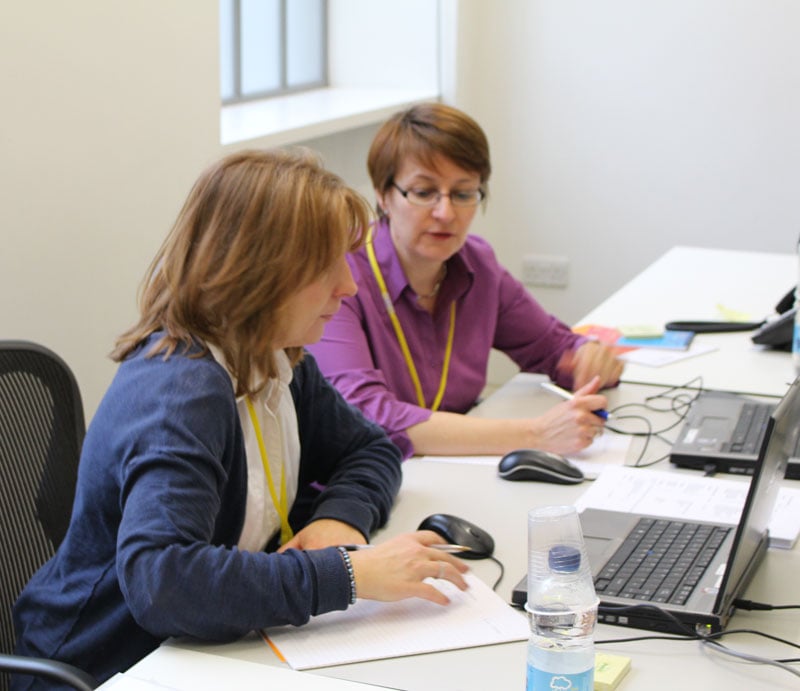HCPC Corporate Strategy 2021-2026
Our aim is to be a high performing regulator which delivers forward-looking regulation underpinned by strong data, collaboration and compassion.
A critical first step has been our Change Plan, which has fast-tracked improvements to the way we work, putting us on a firm footing as an effective multi-profession regulator.
Our new Corporate Strategy embeds those improvements to take us forward for the next five years. It is a strategy that is co-created with our stakeholders - patients and service users, our registrants, partners, professional bodies, education providers, trade unions and employers - listening to them across the regions and professions and working with them collaboratively.
At the heart of our mission is to uphold high standards in the professions we regulate.
This strategy sets out our commitment to improving our core regulatory performance and meeting all the PSA’s standards, particularly regarding our Fitness to Practise process. It sets out an approach that is more empathetic and ultimately will be more effective in ensuring the very best outcomes for the public.
However, to meet the ever-changing and ever-increasing demands in healthcare, our strategy also needs to look to the future and ensure we are doing all that we can to champion public protection and provide support and guidance to our professions. In this way we will meet our ambition to become a high performing healthcare regulator.
Tested by the pandemic, HCPC has made huge strides, collaborating with others to solve problems at pace. In the worst of times we saw the best of HCPC.
While of course the future remains uncertain, this strategy provides a clear direction for the years ahead, underpinned by our values and a commitment to public protection, and promoting the best health and care services across the whole of the UK.
Meeting the challenges ahead
Our statutory duty to protect and promote the health, safety and well-being of the public is our primary role, but there are many challenges ahead as we continue to deal with the effects of the COVID-19 pandemic.
In meeting these challenges, we also need to take the opportunities that are presented, to support significant numbers of new registrants wishing to join allied health, health science and practitioner psychologist professions.
We must ensure that we learn the lessons of the COVID-19 crisis, that our regulatory processes support the development of services, enable high quality practice and do not put in place unnecessary burdens or hurdles.
The challenges ahead
-
Our registrants continue to play an essential role in the control of the virus and the provision of treatment and care for those affected by COVID-19. This work will continue for some time.
We want to harness the flexible and agile approach we took to respond to the COVID-19 pandemic and embed this in our day-to-day practice.
As steps are taken to return to business as usual – the new ‘usual’ – we too will continue to reflect and act on our learning from this period. -
We are encouraged by the NHS People Plan’s proposals to support and develop the professions we regulate. We welcome measures announced in the four nations, to fund clinical placements as well as commitments to additional undergraduate places. These measures will help encourage more people to take up careers in the professions we regulate.
-
We welcome the UK Government’s call for us to focus on the rules and regulations which people across the NHS and social care feel should be amended or removed. We will play our full part in this work and we hope the Government will make a new regulatory framework one of its highest priorities.
-
We are committed to ensuring equality and fairness in all our processes. We recognise the necessary balance between public protection and fairness to the healthcare professional and all those involved in the process. It also means we consider and champion equality, diversity and inclusion in all our internal processes.
-
The end of the transition period with the EU and the negotiation of new trade agreements with other countries, means that we could see a shift in the geography of applicants and an increase or decline in international applications. We need to ensure our registration processes continue to support these changing demands.
Our vision
To be a high performing, adaptable and caring regulator that ensures public protection through strong, evidence-based regulation
Our purpose
To promote excellence in the professions we regulate and champion high quality care that the public can access safely and with confidence
Core activities
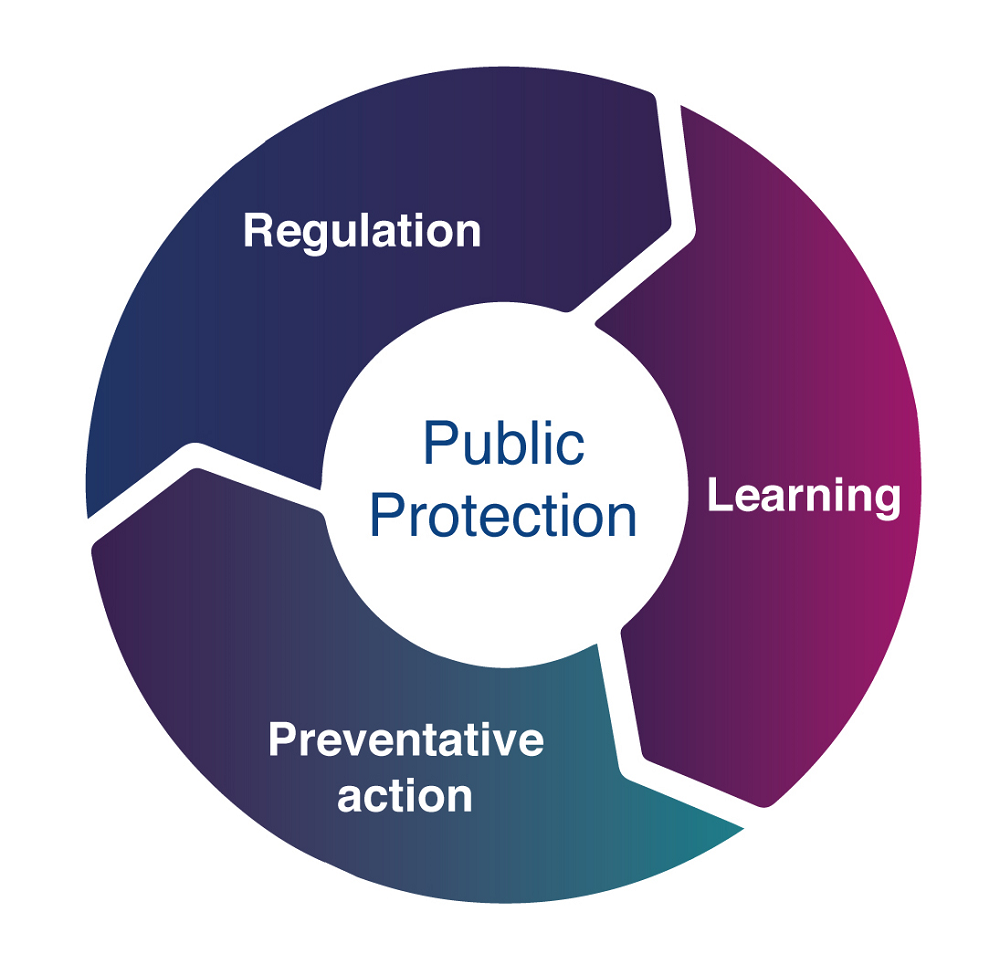
- Maintain and publish an accurate register
- Set appropriate standards
- Quality assure education and training programmes
- Respond proportionally to Fitness to Practise concerns, taking action to protect the public
- We will harness our data to have more informed insights about the impact of our processes and take that learning to improve our regulatory activity, future approach and decision making
- We use what we know from our own learning, and that of others, to promote positive and inclusive professional working environments
- We will develop an approach based on preventative action. This will use our learning to address and reduce the conditions that may contribute to instances of service user harm
- This preventative approach will support quality practice by articulating the expected standards, helping registrants overcome any barriers they face in meeting those standards thereby reducing the need for unnecessary Fitness to Practise actions
Our values
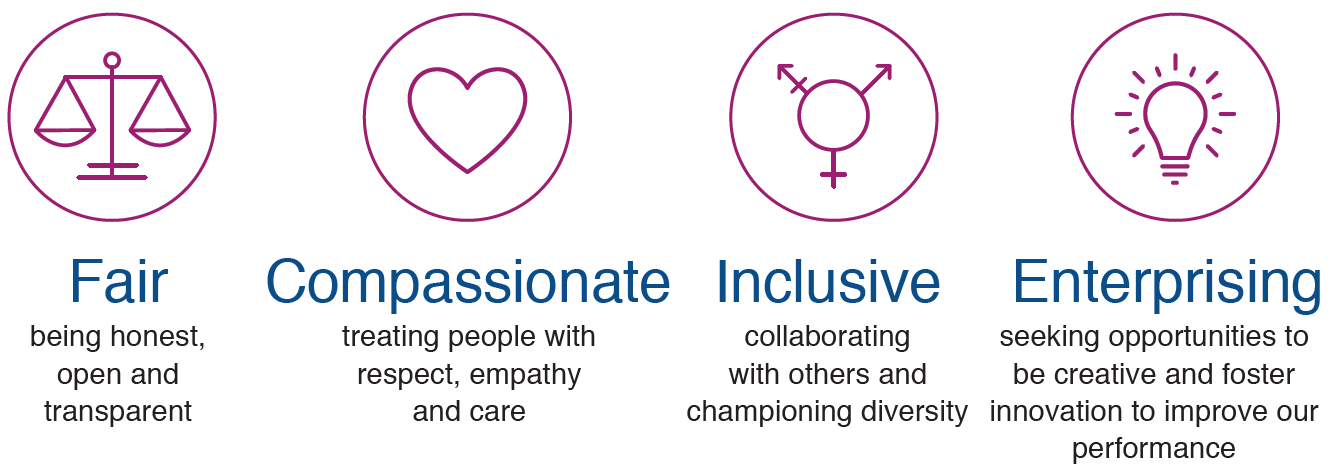
✔ Work with all of our stakeholders to understand and respond to their specific needs
✔ Actively listen to diverse and protected groups including those who may not traditionally have a strong voice
✔ Be empathetic and compassionate in our dealings with registrants, complainants and witnesses
✔ Work collaboratively with others to ensure joined up effective regulation
✔ Contribute and adapt to reflect regional, national and profession differences
✔ Use our data and evidence, and that of our stakeholders, to inform our decision making
✔ Be an excellent employer
✔ Effective regulation which meets the PSA’s standards of good regulation and reflects best practice
✔ An excellent user experience
✔ Well-informed standards, guidance and regulatory processes that enable registrants to adapt to changes in healthcare
✔ Preventative regulation using data, research and analysis to address the conditions that may contribute to instances of service user harm
✔ Guidance and resources that support quality in professional practice
✔ Regulation that adapts to public needs
Delivering the Corporate Strategy
To deliver HCPC’s core work of promoting public protection and effective regulation, we have developed six priority areas of work, our aims for these areas of work and where we expect to be at the end of the five year strategy period in 2026.
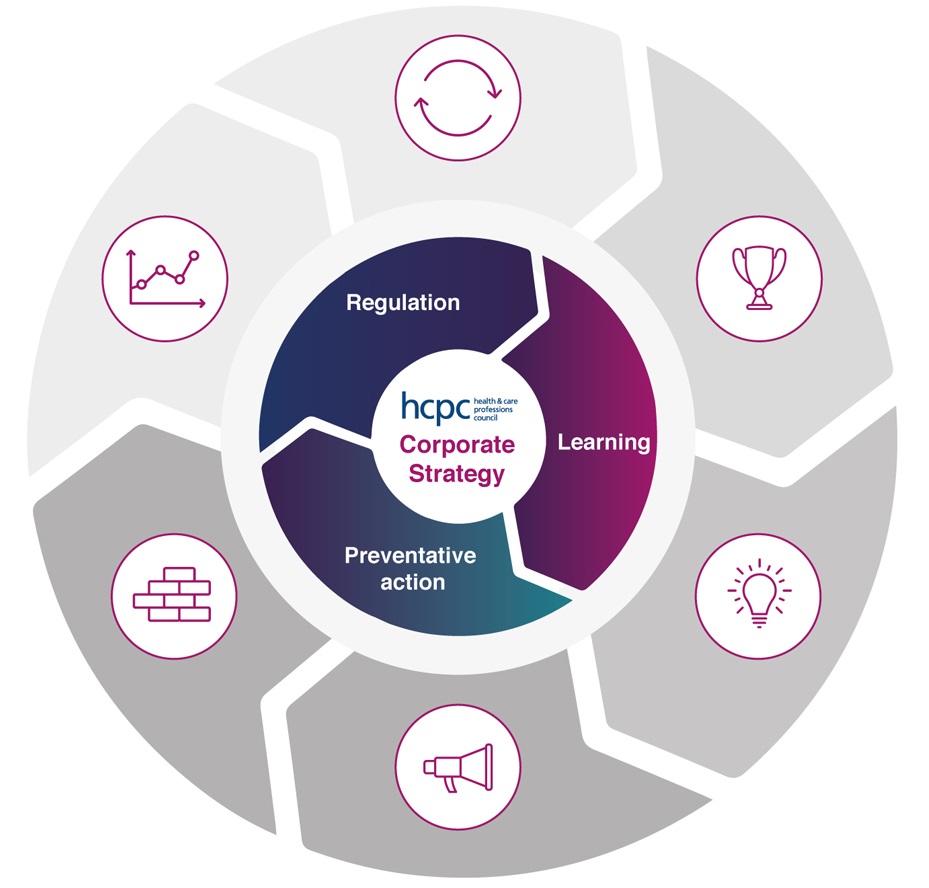
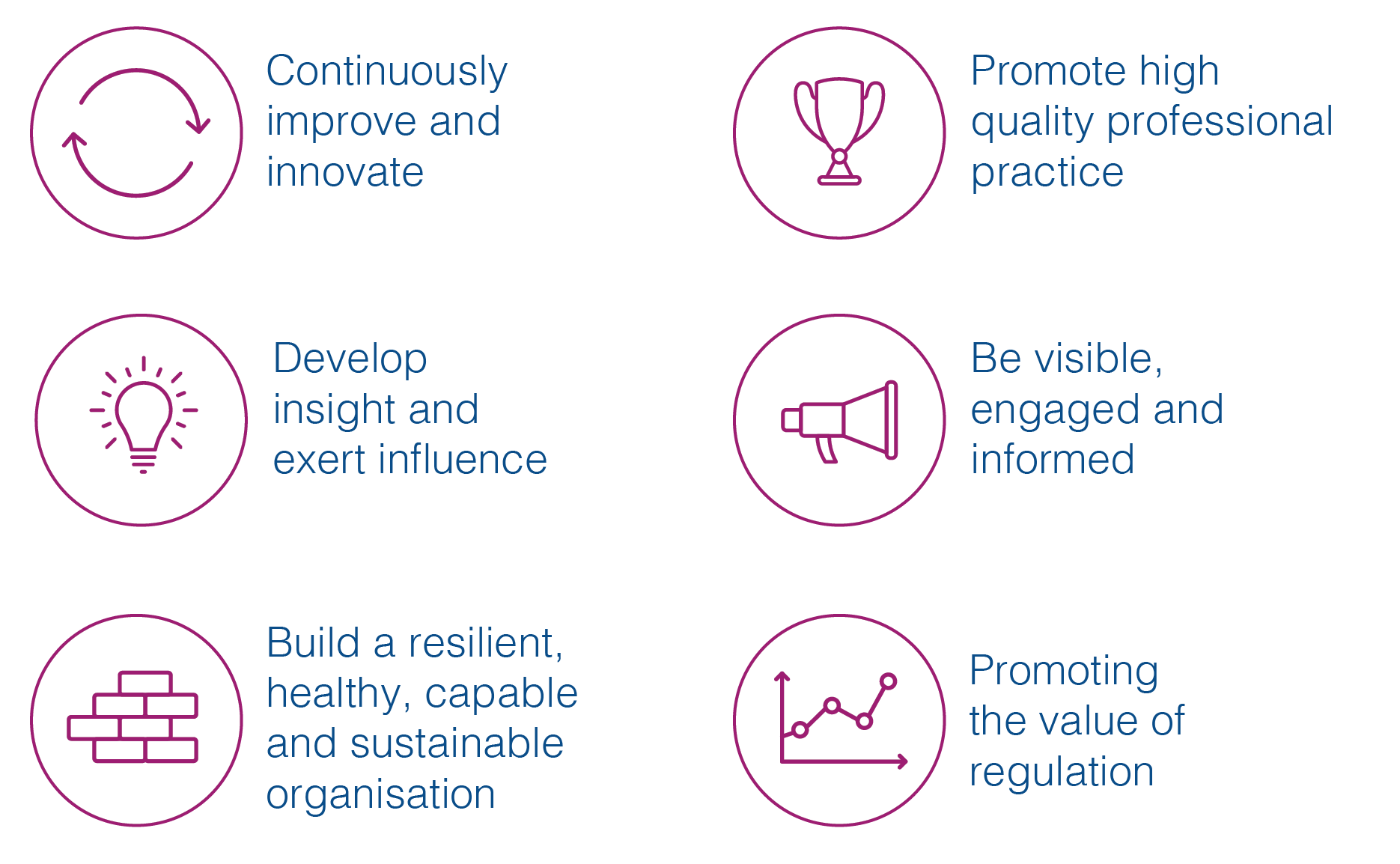
Six priority areas of work
-
AimTo improve our performance against PSA standards of good regulation and to innovate across all our regulatory functions to provide an enhanced user experience
Where we expect to be by 2026
We will have met and sustained our performance against PSA standards of good regulation and ultimately gone above and beyond those standards to become a high performing regulator.
We will be recognised as a beacon of good practice, regulatory leadership and innovation.
We will have implemented a digital strategy which provides easily accessible processes and a positive user experience for our registrants and partners and all those interacting with us.
Our standards, guidance and processes reflect changes in approaches to education and the delivery of care. -
AimEnable our professions to meet our standards so they are able to adapt to changes in health and care practice delivery, preventing harm to service users.
Where we expect to be by 2026
Our regulatory standards, policies and guidance help our registrants adapt to the changing needs of people using health and care services.
Our approach to continuing professional development improves professionalism,
champions high standards of care delivered by our registrants and contributes to reducing incidences of serious Fitness to Practise concerns.
Through collaboration with professional bodies, education providers, employers, registrants, our partners and other stakeholders we develop guidance on our standards that supports professional practice, that are easily accessible and tailored to the needs of the individual professions we regulate. -
AimLearning from data and research to inform our decision making and share insights to protect, promote and maintain the health, safety and well-being of the public.
Where we expect to be by 2026
We use our data, and that of others, to proactively reduce harm to service users, support our registrants and influence wider policy development including making the case for broadening the scope of the professions, through advanced practice, and by bringing in other professions to statutory regulation.
We use data and insight to better support our workforce planning and wider service improvement.
Our data is accurate, accessible and useful.
Our stakeholders see us as a leading voice in multi-profession regulation, providing evidencebased contributions on professional standards and public protection. -
AimWe regulate, take and communicate decisions which are informed by a deep understanding of the environment within which our registrants, employers and education providers operate.
Where we expect to be by 2026
We have effective mechanisms for proactively listening to, engaging and communicating with, all our key stakeholder groups, including diverse and protected groups who may not traditionally have a strong voice.
We champion the values of equality, diversity and inclusion in everything we do.
We will be an active contributor to local/regional/national healthcare policy and practice
development.
We will be able to evaluate the impact of our work on the professions we regulate and use this to inform our decision making.
We will be responsive to those who contact us. -
AimEmployees feel valued and supported, and fully able to contribute. The organisation is resilient and able to quickly adapt to changes in the external environment.
Where we expect to be by 2026
The organisation continues to be financially sustainable, enabling us to invest in those areas of our operations which are most important to service users and patients, our registrants and partners.
We invest in our people, providing a caring environment with equal opportunities for colleagues to develop their skills.
We will improve our recruitment and retention, building capability and ensuring that we have the right skills and competencies to drive our current and future performance.
We will have a sustainability plan which will address how we work and environmental impacts in respect of office space, travel, procurement, energy and waste.
We will have invested in systems and processes to improve our stakeholders’ experience and drive efficiency. -
AimThe public, registrants, students and employers understand the value and importance of regulated health and care professionals.
Where we expect to be by 2026
The public have a better understanding of the professions that we regulate and our role.
The value of our register to the public, registrants and employers will be enhanced, with more accessible and useful information.
We will have implemented a registrant health and well-being strategy and action plan Registrants’ insights will be used to develop a more compassionate and person-centred Fitness to Practise process.
We will promote positive and inclusive professional working environments.
Implementing the Corporate Strategy
This strategy sets out our vision and goals, it details where we want to be and indicates what our priorities are.
Further detail about how and when we will deliver this strategy will be provided in our Corporate Plan and will be supported by the various strategies that support it.
This will include our:
- Equality, Diversity and Inclusion Strategy
- Registrant Health and Wellbeing Strategy
- Digital Transformation Strategy
Additional detail on the implementation of this Corporate Strategy will also be provided by our annual Workplans.
Monitoring and reporting
We will continue to work with and engage our stakeholders to get their feedback on how successfully we are delivering and implementing the key work areas identified within the strategy.
We will report annually on progress against the objectives we have set.

